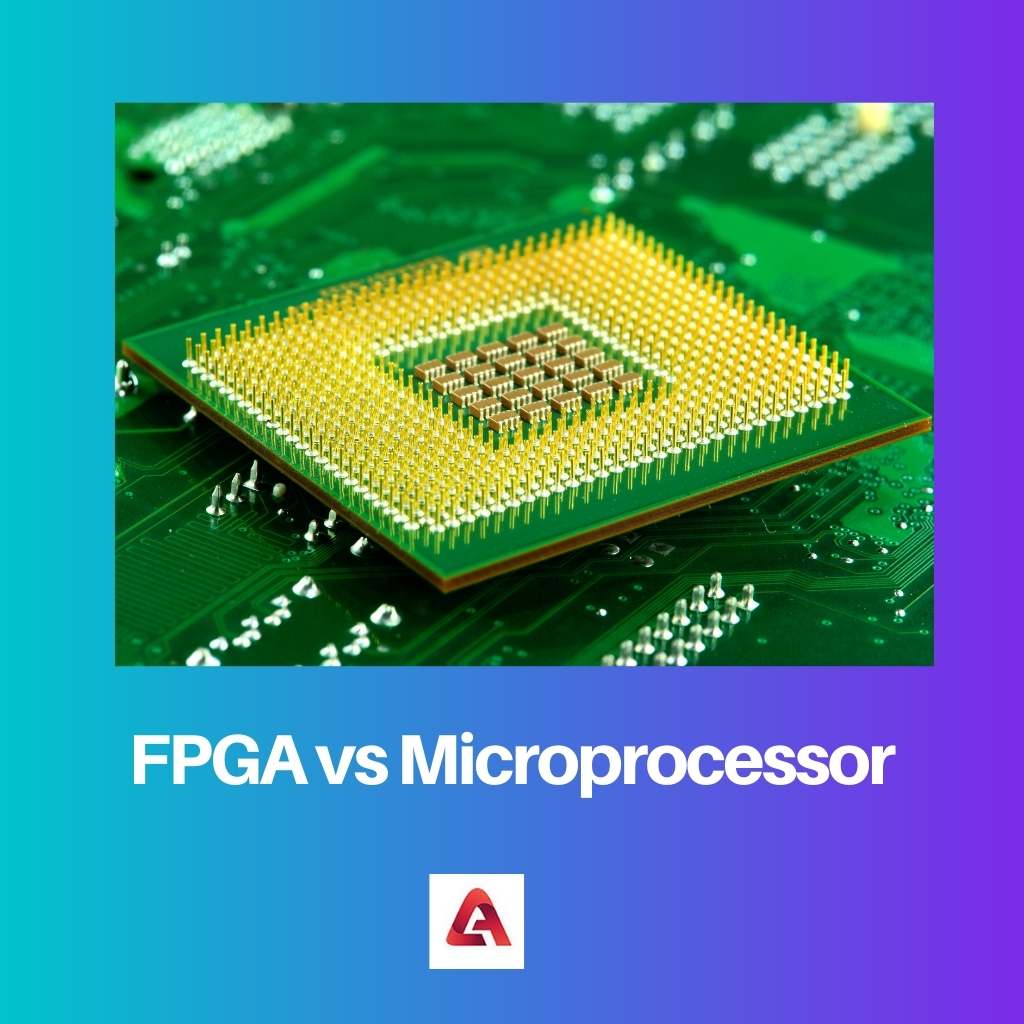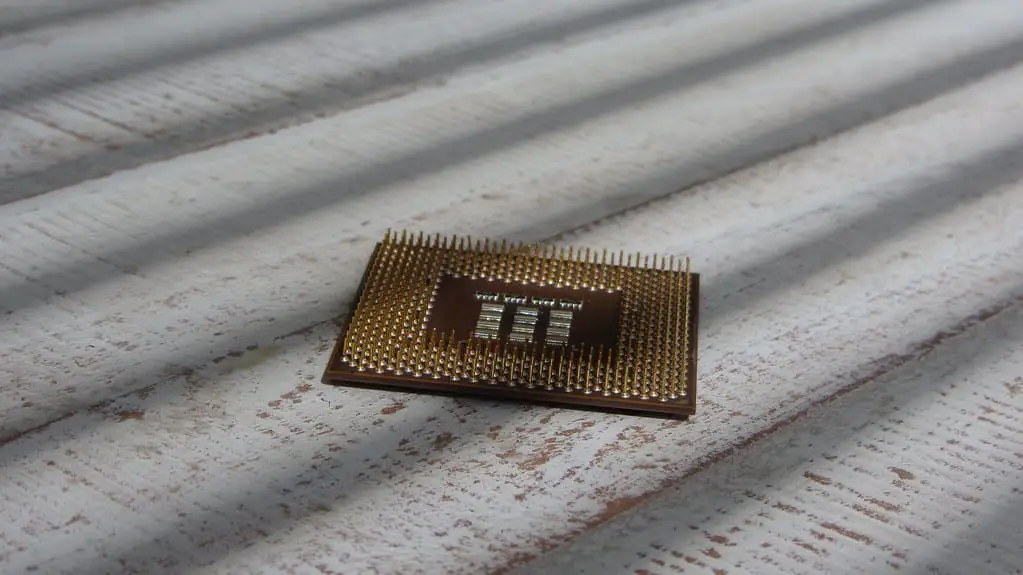The FPGA stands for field-programmable gate array. The FPGA and microprocessors are used in computer hardware. FPGA with microcontrollers is a microprocessor IP, whereas a microprocessor is a central processing unit.
Key Takeaways
- FPGA is a programmable logic device, while a microprocessor is a general-purpose computing device.
- FPGA is designed for parallel processing, while microprocessors are designed for sequential processing.
- FPGA can be reprogrammed for different applications, while microprocessors cannot be reprogrammed similarly.
FPGA vs Microprocessor
FPGA (Field Programmable Gate Array) is a type of integrated circuit that can be programmed to perform various digital functions. A microprocessor is a type of CPU that is used as the “brain” of a computer or other digital system and is designed to execute instructions and perform calculations.

The FPGA stands for Field Programmable Gate Array. It is an integrated circuit.
The Hardware description language(HDL) is used in FPGA. The Hardware description language is similar to the application-specific integrated circuit.
Due to the advent of design tools that work on electronics will lack circuit diagrams. The programmable logic blocks are present in the field-programmable gate array.
To perform combinational functions, logic blocks are used. The logic blocks act as logic gates like AND and OR.
A combination of the integrated circuit is called a microprocessor. It may be a single integrated circuit or several combined circuits.
The microprocessor needs arithmetic, logic, and control circuitry to perform the computer functions. A microprocessor will do interpret and executing functions.
It also performs arithmetic functions. A microprocessor does a process like a clock-driven, register-based, digital integrated circuit.
It is called a multi-purpose processor.
Comparison Table
| Parameters of comparison | FPGA | Microprocessor |
|---|---|---|
| Development period | The development period for FPGA is high. | The development period for the microprocessor is low. |
| Execution | The FPGA executes in parallel. | The microprocessor executes in sequential. |
| Power consumption | The power consumption in FPGA is high. | The power consumption in the microprocessor is low. |
| Data processing throughput | The data processing throughput is high in FPGA. | The data processing throughput is low in the microprocessor. |
| Frequency Range | The frequency range in FGPA is low | The frequency range in a microprocessor is high |
What is FPGA?
The FPGA stands for Field Programmable Gate Array. It is an integrated circuit.
The Hardware description language(HDL) is used in FPGA. The Hardware description language is similar to the application-specific integrated circuit.
Due to the advent of design tools that work on electronics will lack circuit diagrams. The programmable logic blocks are present in the field-programmable gate array.
To perform combinational functions, logic blocks are used. The logic blocks act as logic gates like AND and OR.
Memory elements are also present in the field memory gate array along with logic gates. To implement different functions, the field programmable array can be reprogrammed.
It allows for reconfigurable computing in hardware. A Field programmable gate array has a significant role in an embedded system. It has a greater capability in the development of embedded systems.
The FPGA can help to develop in the early phase. A large number of logic gates and RAM blocks are available in contemporary field-programmable gate arrays.
A Field programmable gate array in ASIC can implement any logical function. The ASIC can provide many offers to the applications.
FPGA comes with analog features which allow you to set low rates in the light-loaded pins and high rates in heavily loaded pins. If it is not set correctly, the pin will ring or couple unexpectedly.
Only a few mixed signals are used in FPGA for integrated peripherals.

What is Microprocessor?
A combination of the integrated circuit is called a microprocessor. It may be a single integrated circuit or several combined circuits.
The microprocessor needs arithmetic, logic, and control circuitry to perform the computer functions. A microprocessor will do interpret and executing functions.
It also performs arithmetic functions. A microprocessor does a process like a clock-driven, register-based, digital integrated circuit.
It is called a multi-purpose processor.
Both combinational and sequential logic is present in the microprocessors. The microprocessors will work on the binary number system.
The Very-Large-Scale-Integration greatly reduces the cost of processing power. It consists of a few integrated circuits.
The microprocessors are produced using the metal oxide semiconductor fabrication process method. A 4-bit Intel 4004 is the first commercial microprocessor, and then it is replaced by 8-bit microprocessors.
Due to reliability, single-chip processors could fail in the connections. By Rock’s law, the price of the chip will be the same even if there are slight changes in the design.
The microprocessor will make a great impact on the design of the computer hardware. It may reduce the size and cost of the entire computer.
It is used in embedded systems, mainframes, supercomputers, and handheld devices. A processor with an arithmetic logic unit and a control logic section is called a microprocessor.
Using the AND or OR, it performs the logic functions.

Main Differences Between FPGA and Microprocessor
- The frequency range in FGPA is low, and the frequency range in a microprocessor is high.
- The data processing throughput is high in FPGA, and the data processing throughput is low in the microprocessor.
- The power consumption in FPGA is high, and the power consumption in the microprocessor is low.
- The FPGA executes in parallel, and the microprocessor executes in sequential.
- The development period for FPGA is high, and the development period for the microprocessor is low.
- https://ieeexplore.ieee.org/abstract/document/590366/
- https://ieeexplore.ieee.org/abstract/document/5272406/
Last Updated : 11 June, 2023

Sandeep Bhandari holds a Bachelor of Engineering in Computers from Thapar University (2006). He has 20 years of experience in the technology field. He has a keen interest in various technical fields, including database systems, computer networks, and programming. You can read more about him on his bio page.

It’s interesting how the article explains in detail the role of FPGA and microprocessors in the world of computer hardware. It’s very educational.
The article presents a detailed analysis of FPGA and microprocessors with a considerable depth of information.
The article has done a good job of presenting the information in an easily digestible format, making it accessible to a wide range of readers.
The depth of information provided offers a strong insight into the differences and capabilities of FPGA and microprocessors.
The article seems to be missing some critical information that could provide a more comprehensive understanding of FPGA and microprocessors.
I agree, the article would benefit from providing more real-world examples to further illustrate the differences between FPGA and microprocessor.
The article provides a great explanation of the differences between FPGA and microprocessor. Every point is clear and easy to understand.
The argument in favor of the FPGA and microprocessors is well presented. I particularly appreciate the thorough comparison table which highlights their differences.
The references provided in the article adds a lot of credibility to the content.
The tone of the article is very informative, and the language used is easily understandable, making it a great resource for those looking to learn about FPGA and microprocessors.